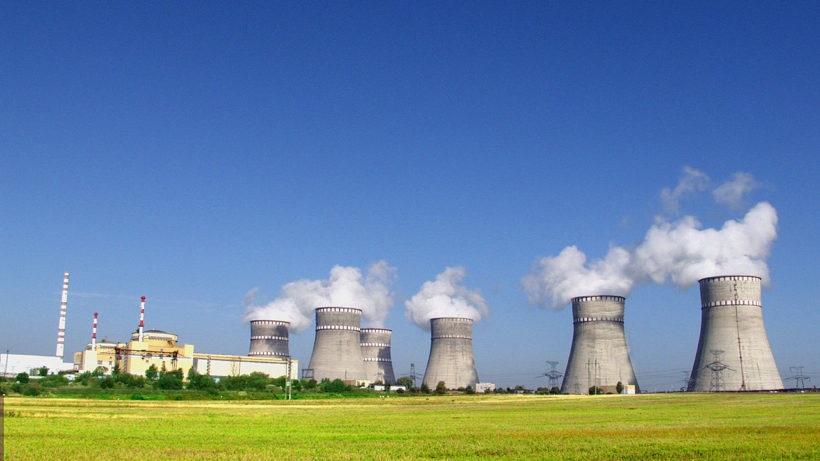Dear International Atomic Energy Agency,
We, the undersigned, represent civil society organizations across the world.
We are deeply concerned about the safety of the people of Ukraine under the current military aggression, which has put the lives of civilians at great risk, threatening a humanitarian disaster on an enormous scale.
Specifically, we are very concerned about the ongoing situation at the Chernobyl nuclear power plant and at Ukraine’s 15 commercial reactors. We understand that Russian forces have taken control of the Chernobyl nuclear site and are also approaching – or may even be occupying – the six reactor Zaporizhzhya nuclear power plant in eastern Ukraine.
We currently have little information regarding the radiation safety of these and the three other nuclear power plant sites.
According to SaveEcoBot and MEDO, online radiation monitoring sites of Ukraine, the radiation data provided by the State Specialized Enterprise Chernobyl nuclear power plant has not been fully updated since the morning of February 25, 2022. The data from the Chernobyl site recorded an exceptional jump in the radiation counts of 65500 nSv/h at 21:50 on February 24. Another concerning increase of 93000 nSv/h was recorded at 10:40 on February 25.
On February 28, 2022, the International Atomic Energy Agency (IAEA) issued a statement that:
Last week, Ukraine informed the IAEA that Russian forces had taken control of the facilities of the State Specialized Enterprise Chornobyl NPP, located within the Exclusion Zone set up after the 1986 accident. The regulator said today that the shift supervisor at the site had not been replaced since 24 February but that he continued to perform his duties. SNRIU (State Nuclear Regulatory Inspectorate of Ukraine) also provided radiation readings from the site which the IAEA assessed as low and in line with near background levels.
The IAEA statement does not provide an explanation for the exceptional jump in the radiation counts that were recorded on February 24 and February 25.
On February 27, 2022, the IAEA published an update that:
Ukraine informed the International Atomic Energy Agency (IAEA) today that missiles hit the site of a radioactive waste disposal facility in Kyiv overnight, but there were no reports of damage to the building or any indications of a radioactive release.
The IAEA also highlighted that a similar incident also took place in another city:
An electrical transformer at a similar disposal facility near the north-eastern city of Kharkiv had been damaged, also without any reports of a radioactive release. Such facilities typically hold disused radioactive sources and other low-level waste from hospitals and industry.
Beyond Nuclear recently published the following concerns related to nuclear facilities in Ukraine:
- The 15 operating reactors in Ukraine — located at Rivne (4), Khmelnitsky (2), South Ukraine (3) and Zaporizhzhia (6) — are all vulnerable to catastrophic meltdown, even if they are not directly attacked or accidentally hit.
- Of even greater concern are the fuel pools containing irradiated fuel rods, which are unprotected by the containment building. Fuel pools contain far more radioactivity than the reactor itself and a fire would release even greater amounts of radiation.
- A war zone could also create a dangerous environment for the nuclear workforce and their families, tempting some to evacuate. But a nuclear power plant, even under daily, routine operations, is not walkaway safe and cannot be abandoned.
Damaged nuclear power plants or radioactive storage sites could result in devastating radioactive impacts in the region.
Therefore, we, the undersigned, call on the IAEA to:
- Determine who is currently responsible for the operation and the radiation safety of the Chernobyl site and investigate their degree of technical capability to deal with nuclear emergencies;
- Conduct assessments to identify the necessity to send additional nuclear technicians to maintain the safety of the Chernobyl site;
- Investigate and establish the status of Ukraine’s 15 reactor sites, to ensure their continued operation under qualified personnel;
- Ensure transparency and protect the right to information of local people by promptly publishing all relevant data and information, in the local language and English, regarding the radiation safety of all nuclear facilities and nuclear power plants in Ukraine; and,
- Request member states of the IAEA, in particular those of all parties to the conflict, to refrain from any military or other action that could threaten the nuclear safety and security of nuclear facilities in the conflict zone.
Endorsed by:
Beyond Nuclear
Canadian Coalition for Nuclear Responsibility
Citizens’ Nuclear Information Center, Japan
DiaNuke.org
Manhattan Project for a Nuclear-Free World
Ontario Clean Air Alliance
Oregon Physicians for Social Responsibility
Veterans For Peace Golden Rule Project
Veterans For Peace Linus Pauling Chapter 132 Corvallis-Albany, OR
World BEYOND War






